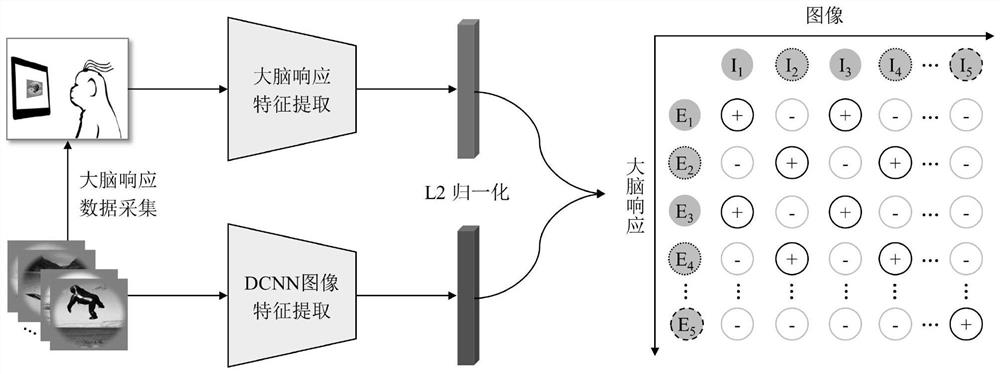Brain-computer information fusion classification method and system for shared subspace learning
A technology of subspace learning and classification methods, applied in the field of brain-computer information fusion classification methods and systems for shared subspace learning, can solve problems such as model deployment troubles, limited application paradigms, and difficulty in obtaining limited brain response data. Improve efficiency and stability, broad application prospects, and achieve efficient migration effects
- Summary
- Abstract
- Description
- Claims
- Application Information
AI Technical Summary
Problems solved by technology
Method used
Image
Examples
Embodiment Construction
[0076]In order to make the objectives, technical solutions and advantages of the present invention clearer, the present invention will be further described in detail below with reference to the embodiments. It should be understood that the specific embodiments described herein are only used to explain the present invention, but not to limit the present invention.
[0077] In view of the problems existing in the prior art, the present invention provides a brain-computer information fusion classification method and system for shared subspace learning. The present invention is described in detail below with reference to the accompanying drawings.
[0078] 1. Explain the embodiment. In order for those skilled in the art to fully understand how the present invention is specifically implemented, this part is an explanatory embodiment to expand the description of the technical solutions of the claims.
[0079] In view of the problems existing in the prior art, the present invention ...
PUM
 Login to View More
Login to View More Abstract
Description
Claims
Application Information
 Login to View More
Login to View More - R&D
- Intellectual Property
- Life Sciences
- Materials
- Tech Scout
- Unparalleled Data Quality
- Higher Quality Content
- 60% Fewer Hallucinations
Browse by: Latest US Patents, China's latest patents, Technical Efficacy Thesaurus, Application Domain, Technology Topic, Popular Technical Reports.
© 2025 PatSnap. All rights reserved.Legal|Privacy policy|Modern Slavery Act Transparency Statement|Sitemap|About US| Contact US: help@patsnap.com



